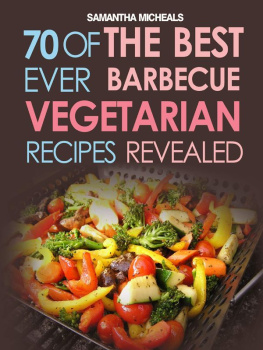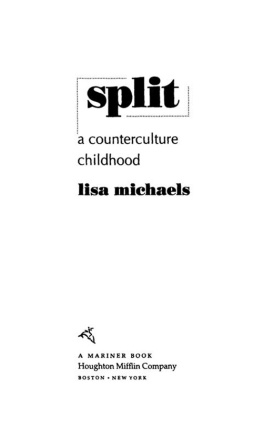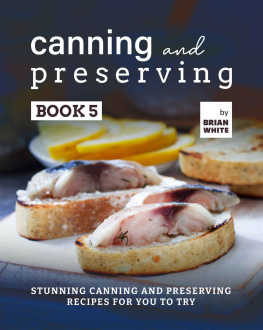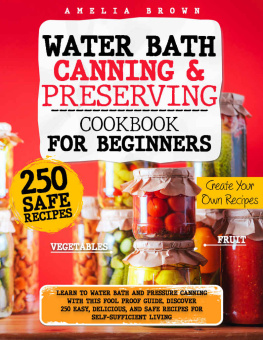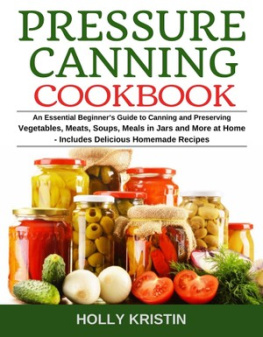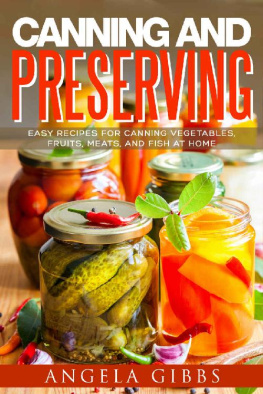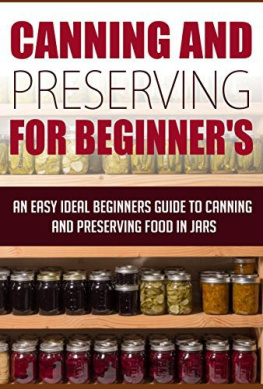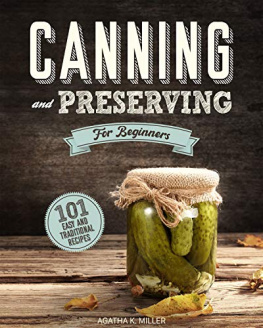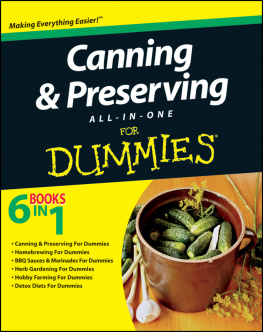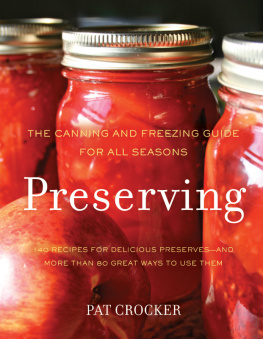
Contents
I want to thank and congratulate you for downloading the book Canning and Preserving: A Simple Home Preserving Guide for your Food in a Jar for All Seasons! (Bonus: Food Storage Tips for Meat, Dairy and Eggs)
This book contains everything you need to know about canning and preserving almost every type of food out there. These days, it is very important that you do everything you can to save money, and to make sure that you have something to eat, in case calamities or unprecedented events occur. It is also important that you have some food that will see you through your everyday life. Canned or preserved food is essential in every household because it is easy to make and very delicious, too.
Well, I wont make this any longer and wont keep you waiting. Turn to the next page now to learn some great canning and preservation procedures.
Once again, thank you for downloading this book and Enjoy!

Jams, or fruit preserves, are canned fruits, vegetables and sugar that have been canned for long-term storage. Jams typically contain the flesh and juice of a fruit or a vegetable. Sometimes, its also described as a jelled puree. What you have to know about jams is that they are often made by crushing or heating fruits/vegetables and adding sugar into it. Jams can be eaten either on their own or with bread.

How to make a home-made jam:
1.First, you have to have some jam-making equipment ready. These equipment include:
1 large pot. 16-20 quart Teflon lined pots are the most recommended ones.
Ladles and large spoons
1 canner, or the pot used to sanitize the jars where youll be putting the jams in
Jar funnel, to help you pour the jams inside the jars
Ball jars. Youll be placing the jams inside ball jars for proper storage.
Thin metal lids with gum binder
Jar grabber or tongs. These will help you in picking up the jars, especially when they are hot.
Make sure that you have cleaned/sterilized the equipment before using them.
2.You have to have the ingredients ready, too. You will need:
Your choice of fruit or vegetable. Usually, strawberries, blueberries, and pineapple, or mangoes are made into jams.
Sugar. About 4 cups of granulated, dry sugar would do the trick. If youre not very much into sugar, you can substitute it with Honey or Agave.
Lemon juice. It is recommended to use no more than cup of juice for every batch of fruits.
Pectin. This is found in apples and makes the jam taste even better and last longer. Adding pectin is optional, though.
3.Directions:
Decide which fruits you want to use. You can buy them from the market or the grocery or pick them yourself if you want. Remember that only 6 cups of fruit at a time is recommended to make a great kind of jam. This will also make sure that the taste stays intact (1 batch = 6 cups).
Wash and hull the fruits.
Mash the fruits. Do not crush them completely so as not to lose their natural juices and to make sure that theres still some texture left.
Measure the amount of sugar that you would be using. The amount of sugar you have to use will depend on the kind of fruit that youll be using. Again, the amount of sugar indicated below is in the proportion of a batch for every 6 cups of fruit and not just a cup alone. Heres a quick guide:
o Strawberries/Blackberries/Blueberries 4 cups of sugar
o Apple 7 cups of sugar
o Mango 6 cups of sugar
o Pineapple 7 cups of sugar
For those who want to use pectin, mix it with cup of sugar before mixing to the fruits.
Mix everything together and cook to a full boil. It will only take 5 to 10 minutes to get something to boil fully.
Add the remaining sugar and bring to a boil for at least 4 more minutes.
Let it stand for at least 5 minutes and then stir until there are no more bubbles left.
Let it cool for a little bit and then pour into the ball jars. Make sure that you seal it well in order to restore freshness and taste.
Boil the jars in hot water for at least two minutes, then remove them and let them cool. Store in a cool, dry place. Thats it; you have made your own homemade jam!
Take note that in order to check the consistency of the jam, you have to keep a tablespoon with you in the kitchen while working. Use the spoon to check if the jam is too rummy, too thick, or just about right.
Fruit butter is a spread made out of fruit that is cooked to a paste and is lightly sweetened. Fruit butter/paste is mostly popular in Latin-American countries and is sweeter and more jelled than fruit jams but with less sugar content. Some common examples are:
Pear butter
Apple butter
Pumpkin butter
Mango butter/paste
Guava butter/paste
Fig butter/paste
The best thing about fruit butter is that its easy to make and you do not need pectin or any other artificial ingredient for it. All you have to do is hull the fruit, mix it with some sugar and youre all set. You may also choose to cook in small or large batches. They are also perfect as gifts, especially during the holidays.

You can make Fruit Butter through different cooking methods. You may use any of the following:
SlowCooker Place the pulp inside the cooker with the cookers lid partially off in order for steam to escape. Set at low fire and cook. Stir occasionally. Leave it at that for around 6 to 12 hours overnight or until the butter is thick enough that it doesnt fall off a spoon.
StovetopCooker In a medium saucepan, place the sweetened pulp and cook over medium-low heat.
Microwave Place the pulp in a microwave bowl and cook for 20 minutes. Stir frequently until thick.
Oven Set the oven to 300 degrees and place the sweetened pulp in a roaster or uncovered casserole dish. Bake and stir occasionally for 1 to 3 hours or until thick enough. The result would be a darker colored butter but whats good is that it is sturdier than other fruit butters that are cooked using a stovetop or a slow cooker.
To process the fruit butter, heres what you have to do:
Place the hot fruit butter in a sterilized jar. Make sure that you leave at least a inch space at the top.
Cover the jar with sterilized rings and lids.
Process in a water bath for 10 minutes.
Remove from heat and allow to cool for a bit before storing. Fruit butters can last for months and even up to a whole year.
Marmalades are made from the peel and juice of citrus fruits that are boiled in water with sugar. More often than not, lemon, lime, mandarins, grapefruits, sweet oranges, Seville oranges, and Bergamot oranges are used to make marmalades. The difference between a jam and marmalade is the fruit peel that is often found in marmalades.
How to make marmalade:
Choose the fruit that you would be using. Again, you have to remember that citrus fruits are often the best kind of fruits used for marmalades. This is because citrus fruits have a very strong sharp taste and acidity that makes it easy for them to be turned into a liquefied substance. The peel of citrus fruits is also edible once processed.
Next page


